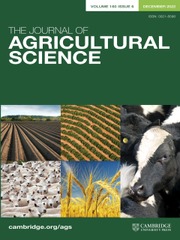Article contents
Studies in the geology and mineralogy of soils: I. A detailed study of a region characterised by diverse rocks and partly covered by glacial drift
Published online by Cambridge University Press: 27 March 2009
Extract
1. An account is given of the geology and mineralogy of the soils of a small area characterised by diverse rock groups, which are mainly covered by glacial drift. The topography is also varied. The soils are mainly derived from boulder clay, glacial sands and gravels, and alluvium, the remaining soils being formed on screes and hill-wash. The underlying rocks are lavas of Old Red Sandstone age and sandstones and shales of Carboniferous age.
2. A similarity in mineral content of the soils on glacial material and alluvium is shown. All these soils have a high content of fresh ferro-silicates. The soils on the screes and hill-wash are characterised by their content of rock fragments and iron oxides, but minerals from glacial material are also present, though to a minor extent.
3. The soils on the drift material contain potash, phosphate and lime-bearing minerals.
4. The varied nature of the parent materials has given rise to varied textures in the soils. The soils on the boulder clay are the heaviest, while, the soils on the fluvio-glacial material are very variable.
5. The mineral content of the matrix of the boulder clay is similar to that of the local rocks, only the rarer minerals being derived from external sources.
Information
- Type
- Research Article
- Information
- Copyright
- Copyright © Cambridge University Press 1929
References
REFERENCES
- 4
- Cited by

